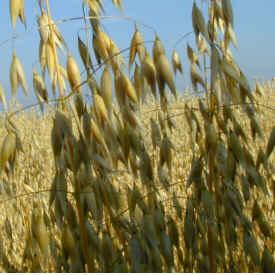Key terms used in this report:
Cross-resistance - a single genetic mechanism in the weed that confers resistance to more than one herbicide active ingredient.
De-selection - refers to removing the selection pressure on a weed from the herbicide (e.g herbicide disused)
Partial resistance - only a small proportion of the weed population (typically less than 20%) survive the specific herbicide treatment at the standard application rate
Enhanced metabolism - ability of the weed to detoxify the herbicide in question. Often involves multiple genes and mechanisms. This is opposed to target-site resistance which is due to a mutation in the specific gene and thus protein that the herbicide in question is targeting.
There were 4 main topics and objectives of this study which a summary of each is provided below:
1. Population dynamics of resistant populations
Objective: To determine the effects of cultivation type, herbicide dose rate, mixtures/sequences and herbicide rotations on the rate of development of resistance in wild-oats through experimental analysis.
- Interactions of cultivations and herbicide rate on resistance in wild oats
- On theoretical grounds, resistant is expected to develop faster where non-inversion tillage systems are practiced.
- However, in container experiments there was no evidence supporting this hypothesis - enhanced metabolism resistance did not develop more rapidly under simulated non-inversion compared to inversion tillage i.e differences between cultivations did not produce significant changes in herbicide efficacy.
- Influence of dose rate, herbicide rotations, mixtures and sequences on resistance in wild-oats
- Experiments showed that after five annual applications of herbicides to wild-oat populations in which partial resistance already existed did not increase the level of resistance in that population.
- However these studies also demonstrated that resistance did not decline when herbicide use was reduced.
- Full herbicide rates applied early (when the oats have 2-3 leaves) were capable of effective control whereas later applications (especially at reduced rates) were less effective.
- Resistant populations were not controlled effectively regardless of timing or dose.
- Difenzoaquat treatments provided the best control in terms of single herbicide treatments on partially resistant populations. Fenoxaprop and tralkoxydim were highly effective on susceptible populations.
- Influence of resistance on variation in herbicide performance in different years
- A full rate of fenoxaprop gave consistently good control of susceptible oat populations in all years - but reduced rates may be less consistent, even on susceptible populations.
- In the partially resistant oat population, control was always poorer at comparable rates compared to the susceptible population. The performance of fenoxaprop on this partially resistant population also fell rapidly when dose rate reduced from full to half.
- Selection for resistance in wild-oats: Glasshouse studies
- Selection experiments were done over a 5 year period using a range of populations at varying resistant levels
- The results showed that continuous use of a herbicide to which resistance already exists does not necessarily lead to a quick rise in resistance over the 5 year period in populations with enhanced metabolism.
- But results indicated that various populations may respond in different ways to selection - extrapolating generalisations based on only a few populations may be misleading.
- Deselection in resistant wild-oats: Glasshouse studies
- Deselection refers to removing the selection pressure from the herbicide (e.g herbicide disused)
- Experiments showed that when four resistant populations were grown without any herbicide applications for 5 continuous years, in 3 populations there was no evidence of deselection to fenoxaprop. However in one population that was initially very resistant to fenoxaprop, after 5 years the level of resistance had decreased (although was still substantial). Reversion to full susceptibility was not achieved in any case.
- The results from the selection and de-selection experiments demonstrated that if there is already resistance to a herbicide, then continuing to use or ceasing to use that herbicide may not necessarily result in a change in resistance over a 5 year period - but as different populations may respond differently it was advised to be wary about making generalisations. It also may be different for target site resistance mechanisms.
These experiments highlighted the need to be able to identify the reasons for poor control and establish the severity of resistance so that the optimal management programme can be implemented.
2. Cross-resistance patterns
Objective: To determine the cross resistance patterns in a range of wild-oat populations
- Some wild-oat populations were exclusively resistant to 'fops' and were not cross-resistant to 'dims' (fops and dims are two groups of ACCase inhibiting enzymes - HRAC Group 1). This herbicide group is widely used in weed control and are high risk of resistance selection.
- However other populations that were resistant to 'fops' were also resistant to the 'dim' herbicide tralkoxydim as well as the ALS inhibitor (HRAC Group 2) imazamethabenz-methyl.
- Susceptibility to all tri-allate, isoproturon, difenzoquat and cycloxydim herbicides was confirmed.
By understanding cross-resistance patterns it can make it easier to develop effective management strategies that minimise further resistance risks, especially as cross-resistant biotypes are more challenging to control with alternative herbicides.
3. Occurrence and distribution of resistant populations
Objective: To determine the distribution and relative frequency of resistance in the two wild-oat species.
- Over 5 years, 121 populations were evaluated for resistance to fenoxaprop-P-ethyl, tralkoxydim and imazemethabenz based on experiments in this project and from records by organisations who screen for wild-oat resistance.
- In 1999 resistance to fenoxaprop-P-ethyl was detected on 65 farms in 19 English counties - this was not yet detected in Wales, Scotland.
- **AHDB websites reports that by 2016 herbicide resistance has been detected on over 25- farms and 28 counties**
- This update shows that resistance is more widespread geographically and a growing problem.
- Resistance was identified in both species of wild oats.
- Resistance was also found on 3 neighbouring farms in one county, raising concerns about the spread of resistant oats - as oats are self-pollinating spread of resistance via pollen is unlikely, so spread of seeds appears the most likely option.
4. Influence of resistance on wild-oat at field recommended doses
Objective: To determine to what extent the control of wild-oats is reduced at field recommended rates in: a) Field experiments and b) In container experiments (see fully linked review for details of these experiments)
- Both field and container experiments generated results that reflected those from petri dishes and glasshouse pot tests. This consensus among testing methods means such test systems could form the basis of future testing strategies
- Field experiments highlighted the problem of identifying resistance on the sole basis of field experience - i.e what do we class as 'partial resistance' vs 'susceptible'. To detect partial resistance more controlled tests, such as glasshouse pot assay, as needed
CONCLUSIONS
- Herbicide resistance should be part of any evaluation strategy for new herbicides for wild-oats
- Herbicide-resistant oats can be controlled but it is important to identify the resistance mechanism and optimise herbicide timings
- A rapid diagnostic test for wild-oat resistance is required
For the full report click this link: : 'Developing strategies for reducing the risk from herbicide resistance wild-oats (Avena sp.) - S R Moss, S E Hughes, A M Blair, J H Clarke.
For updated information on wild oat resistance: Click this link









